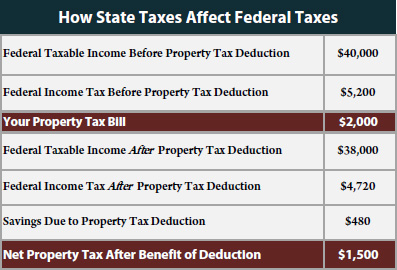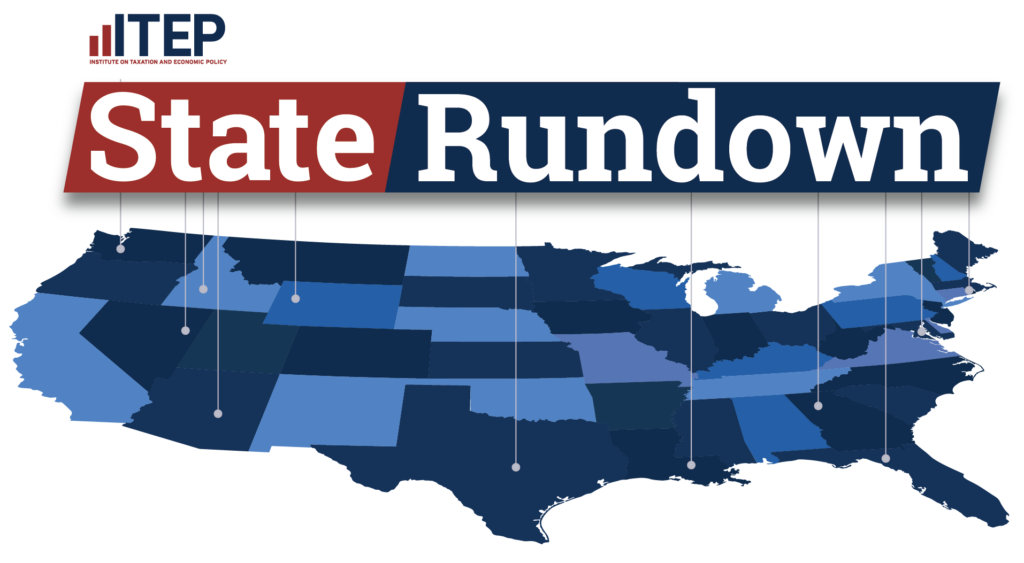Read this Policy Brief in PDF Form
State lawmakers frequently make claims about how proposed tax changes would affect taxpayers at different income levels. Yet these lawmakers routinely ignore one important consequence of their tax reform proposals: the effect of state tax changes on their constituents’ federal income taxes. Wealthier taxpayers can use the federal income tax to partially offset their state and local income and property taxes. This “federal offset” has important implications for how state tax changes affect people. This policy brief explains this important but often-forgotten link between state and federal taxes.
The “Federal Offset:” How It Works
Federal income tax rules allow taxpayers to claim itemized deductions for certain personal expenditures that affect their ability to pay taxes. For example, you can use these deductions to offset part of the cost of charitable contributions, mortgage interest payments for homeowners, and state and local income and property tax payments. These deductions make it less costly to give to charities, to pay your mortgage, and to pay state or local taxes. The ability to deduct these taxes on your federal tax forms means that if you itemize your federal taxes, some of your state taxes are offset by lower federal taxes. This feature of the federal income tax is sometimes called the “federal offset.”
The chart on this page helps to explain how it works. Suppose you pay $2,000 in local property taxes. If your federal taxable income is $40,000 before taking account of your property taxes, then you would pay about $5,200 in federal income taxes. But since you can take your property taxes as an itemized deduction, your federal taxable income will be reduced to $38,000 after subtracting your $2,000 property tax bill. As a result, your federal income tax bill drops to $4,720—a savings of $480. In other words, 24 percent of your property tax bill ultimately is paid by the federal government. At the end of the day, what comes out of your pocket is only $1,520—not $2,000, as it might have originally seemed. This example works exactly the same way for state income taxes, which can also be written off as an itemized deduction.
Who Benefits?
The practical impact of being able to write off these state and local taxes is that if you itemize your federal income taxes, your state income tax and property tax bills are never really as big as they appear. Lower-income taxpayers who don’t itemize their federal income taxes will not be able to take advantage of the federal offset at all.
Some portion of the state taxes you pay initially will be directly offset by lower federal taxes when you file your federal tax forms. How good a deal this is depends on which federal income tax bracket you’re in. A taxpayer in the 10 percent federal tax bracket can write off, at most, 10 percent of the cost of her state income and property taxes. But wealthier taxpayers who pay at the top marginal rate of 35 percent can deduct up to 35 percent of these taxes.
Evaluating State Tax Proposals: Federal Interaction Matters
The federal offset has clear implications for proposals to increase (or cut) state income and property taxes. When state income taxes go up, part of that tax hike will not come out of state residents’ wallets at all, but instead will be paid by the federal government in the form of federal tax cuts for itemizers. State income tax cuts have a similar offsetting effect: when state income taxes go down, so does the amount of state income tax that can be written off by itemizers on federal tax forms—and federal income taxes go up as a direct result.
Just how much of a state tax hike will be paid by the federal government depends on two factors: how progressive the state tax hike is, and which type of tax is being increased. Since wealthy taxpayers are most likely to itemize, and pay at higher federal income tax rates, the most effective way to export a state tax hike to the federal government is to focus the tax hike on wealthier taxpayers. Property taxes generally take only a small part of the wealthiest taxpayers’ income, so the federal offset from a property tax change will be fairly small. But state income taxes are progressive, requiring wealthier taxpayers to pay more of their income in tax. So the federal offset from an income tax change will be larger—and the more the state income tax change targets the wealthiest taxpayers, the bigger the offset will be.
From the perspective of individual taxpayers, the federal offset makes state income tax hikes a good deal—and state income tax cuts a lousy deal. State lawmakers face the same basic math (even if they don’t recognize it). The federal offset gives lawmakers a chance to decide whether tax cuts ought to go to state residents or to the federal government. When lawmakers enact income tax cuts targeted to wealthy taxpayers, they’re essentially choosing to send up to 35 percent of the tax cut to Washington, D.C. But when lawmakers enact targeted low-income tax relief, they’re targeting all of their tax reductions to state residents.
Unlike income and property taxes, sales and excise taxes are generally not deductible on federal tax forms. Sales taxes used to be deductible, but have not been since the passage of the 1986 Tax Reform Act, in part because it was very difficult for people to keep track of what they actually paid in sales taxes. Temporary federal legislation allows an optional itemized deduction for sales taxes in lieu of income taxes—this optional deduction is available only available through tax year 2011, and will be used almost entirely by residents of the few states that do not currently levy state income taxes.
Because these taxes generally can’t be written off on federal tax forms, every dollar of sales tax that is paid initially by state residents ultimately comes out of their pockets—and every dollar of a sales tax cut that goes to state residents remains in their pockets. In this sense, income and property taxes are effectively less costly to state residents than are sales and excise taxes—an important point to remember as lawmakers decide which taxes to increase or cut.
Federal Deductibility—A Neglected, but Important Tool
Lawmakers who cut state income taxes give away billions of dollars of state tax revenue to the federal government, rather than to their constituents. And lawmakers hiking sales and excise taxes are imposing huge tax hikes on low- and middle-income taxpayers, with little or no offsetting federal tax relief. Greater awareness of the federal offset can help state policymakers prevent mistakes in the future by better targeting tax relief to their own constituents.




